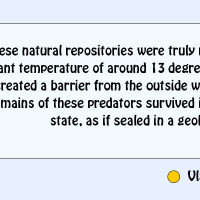- Wednesday, 29 October 2025
Scorching Heat
At the peak of summer this year, Nepal recorded quite a sweltering temperature. As mercury soared up to 44.2 degree Celsius in Nepalgunj, the heat blistered through the days, leaving people listless and scorching. As such, lives were disrupted in Tarai which tends to experience scorching heat in summer. Conversations revolved around the rising temperature as people complained of the weather incessantly. Schools were closed in most part of Tarai. And cases of heat strokes spiked as dehydration became a major problem. People only breathed a sigh of relief once the monsoon set in.
Even in Kathmandu which sees a relatively mild summer, heat tested its citizens who felt the blistering mercury. Kathmandu’s maximum temperature reached 35.3 degrees Celsius this year as people took to blasting air conditioners and fans. Health experts warned of possible dehydration and cautioned to shield from heat. Cafes served chilled drinks as people sought respite from the weather.
As such, weather is a day-to-day state of atmosphere at a particular area and includes humidity, heat, cloudiness, sunshine, dry and wet spell, and so on. Nepal is fortunate to have a favourable weather year round, although there are places such as Tarai and the Himalayan region with extreme temperatures. Since most places in Nepal have a pleasant weather, the nation is a favourite among tourists.
However, this year was particularly taxing when it came to the heat. It has been attributed to rising climate change. Global warming is a result of an increment in greenhouse gases such as carbon dioxide, methane, nitrous oxide and water vapour which are emitted through burning of fossil fuels. These gases tend to trap the radiation of the sun rays preventing them from escaping into the space which heats the earth’s atmosphere. Over time, the consequence has been climate change and its repercussions have seen melting ice caps, wildfires, drought, rising sea levels, and more extreme weather events such as heat waves especially in the urban areas.
While cities in the developed nations have taken steps to lower the heat in an eco-friendly manner, urban areas in poorer nations have been left to their own devices. The impact of extreme weather is particularly adverse in lower income nations as their citizens are more vulnerable due to a lack of adequate resources. As a result, cities in developing nations are seeing worsening effects of heat waves year after year. In Jacobabad, Pakistan, the temperature read 50 degree Celsius while in New Delhi, India, 52.9 degrees was recorded this year. New Delhi issued an orange alert which is a warning indicating severe risk of hazardous weather events. Its residents faced a searing heat wave disrupting their regular lives.
In contrasts, in developed nations, the governments have implemented cooling facilities in urban areas which have greener spaces and infrastructures such as improved ventilation in buildings along with heat island reduction strategies. Thus, even though they too face sweltering temperature, they have resources available to tackle heat waves. According to studies, cases of extreme weather could continue to rise yearly wreaking havoc in a global scale. While the heat might subdue for the rest of the summer this year in Nepal, thanks to the monsoon, the record breaking heat waves have been a cause for alarm.

















